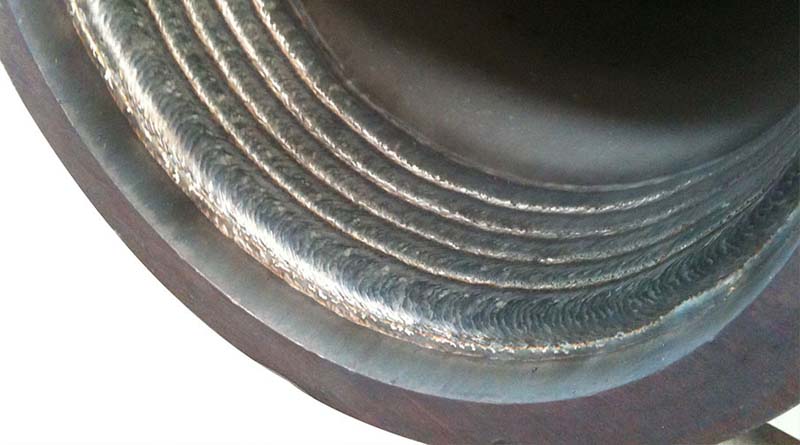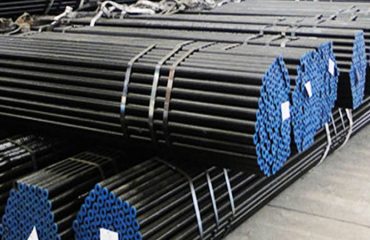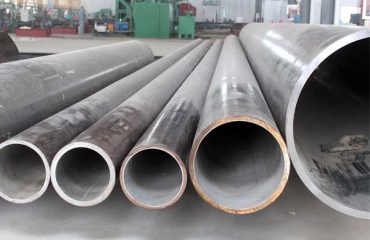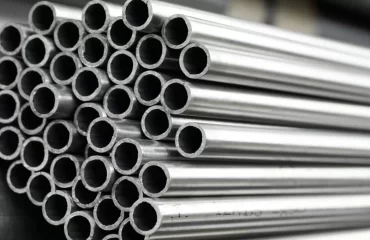
Cladded Pipes Specification
Cladding Pipe Process
What is Cladded Pipe?
Size Range of Cladding Steel Pipes?
Clad Pipe Price List?
Pipe Cladding Surface Treatment?
Cladded Pipes Specification
Cladded pipes, also known as clad pipes, are pipes that consist of a base metal pipe with an additional layer of cladding material bonded to its surface. This combination of materials provides enhanced corrosion resistance, mechanical strength, and specific functional properties. The specifications of cladded pipes can vary depending on the specific application and requirements. Here are some common specifications:
-
Base Metal Pipe: The base metal pipe is typically made of carbon steel, stainless steel, or alloy steel. The selection of the base metal depends on factors such as the operating conditions, pressure, temperature, and the desired mechanical properties.
-
Cladding Material: The cladding material is usually a corrosion-resistant alloy or metal, such as stainless steel, nickel alloys, titanium, or zirconium. The choice of cladding material depends on the corrosiveness of the environment and the specific requirements of the application.
-
Cladding Thickness: The thickness of the cladding layer can vary depending on the application and the level of corrosion resistance required. It is typically specified in millimeters or inches.
-
Cladding Bonding Method: The cladding material is bonded to the base metal pipe using various methods, such as explosion bonding, roll bonding, or weld overlay. The bonding method ensures a strong metallurgical bond between the base metal and the cladding layer.
-
Pipe Dimensions: Cladded pipes are available in various sizes and dimensions to meet the specific requirements of different applications. The pipe dimensions include the outer diameter (OD), wall thickness, and length.
Cladding Pipe Process
The cladding process involves bonding the cladding material to the base metal pipe to form a composite structure. The specific process used for cladding pipes can vary depending on factors such as the cladding material, the base metal, and the desired properties of the final product. Here are some common cladding processes:
-
Explosion Bonding: This process involves placing the cladding material and the base metal pipe in close contact and subjecting them to a high-energy explosion. The explosion creates a strong metallurgical bond between the two layers.
-
Roll Bonding: In this process, the cladding material is mechanically bonded to the base metal pipe through a combination of pressure and heat. The cladding material and the base metal are passed through a set of rolls, which apply pressure to create a solid bond.
-
Weld Overlay: Weld overlay involves depositing the cladding material onto the base metal pipe using various welding techniques, such as submerged arc welding (SAW) or gas tungsten arc welding (GTAW). The welding process ensures a strong bond between the cladding material and the base metal.
What is Cladded Pipe?
A cladded pipe, also known as a clad pipe, is a type of piping system that consists of a base metal pipe with an additional layer of cladding material bonded to its surface. The cladding material provides enhanced corrosion resistance, mechanical strength, and specific functional properties, making cladded pipes suitable for various industrial applications.
Cladded pipes are used in industries where corrosion resistance is critical, such as oil and gas, chemical processing, petrochemicals, and offshore applications. The cladding layer protects the base metal pipe from corrosive environments, ensuring the longevity and reliability of the piping system. The choice of cladding material depends on the specific requirements of the application, including the corrosiveness of the environment, temperature, and pressure.
Size Range of Cladding Steel Pipes
The size range of cladding steel pipes can vary depending on the specific requirements of the application and the manufacturing capabilities of the suppliers. Cladding steel pipes are available in a wide range of sizes to accommodate different industrial needs. Here are some common size ranges:
-
Outer Diameter (OD): Cladding steel pipes can have an outer diameter ranging from a few inches to several feet. The exact range depends on the manufacturing capabilities and specifications of the supplier.
-
Wall Thickness: The wall thickness of cladding steel pipes can vary based on the application and the required mechanical strength. It is typically specified in millimeters or inches.
-
Length: Cladding steel pipes are available in standard lengths, such as 6 meters or 12 meters. However, they can also be customized to specific lengths based on the project requirements.
It is important to consult with the suppliers or manufacturers to determine the available size ranges and any customization options for cladding steel pipes.
Clad Pipe Price List
The price of clad pipes can vary depending on several factors, including the size, material, cladding thickness, manufacturing process, and market conditions. It is best to consult with multiple suppliers or manufacturers to obtain accurate and up-to-date pricing information. They will consider your specific requirements and provide you with a customized quotation based on the project specifications.
The price of clad pipes is typically quoted per unit length (e.g., per meter or per foot) or per ton, depending on the industry norms. It is important to consider not only the upfront cost but also the long-term benefits and performance of the cladded pipes inPipe Cladding Surface Treatment
Pipe cladding surface treatment is an important step in the cladding process to ensure the quality, durability, and performance of the cladded pipes. The surface treatment is applied to both the base metal pipe and the cladding material to prepare them for bonding and enhance the adhesion between the two layers. Here are some common surface treatment methods used in pipe cladding:
-
Surface Cleaning: Before applying any treatment, the surfaces of the base metal pipe and the cladding material need to be thoroughly cleaned to remove any contaminants, such as dirt, grease, or rust. This can be done using methods like solvent cleaning, alkaline cleaning, or abrasive cleaning.
-
Surface Roughening: Roughening the surfaces of the base metal pipe and the cladding material can improve the mechanical interlocking between the two layers. This can be achieved through methods like grit blasting, which involves propelling abrasive particles at high velocity onto the surfaces to create a rough texture.
-
Surface Etching: Etching the surfaces of the base metal pipe and the cladding material can enhance the adhesion by creating a microscopically rough surface. This can be done using chemical etching solutions that selectively remove a thin layer of material from the surfaces.
-
Surface Activation: Surface activation treatments, such as plasma treatment or chemical activation, can be applied to increase the surface energy of the base metal pipe and the cladding material. This promotes better wetting and adhesion between the two layers during the bonding process.
-
Surface Passivation: Passivation treatments are used to protect the surfaces of the base metal pipe and the cladding material from corrosion. This is typically done by applying a thin protective layer, such as a chemical passivation solution or a protective coating, to prevent the formation of corrosive compounds.
The specific surface treatment method used in pipe cladding depends on factors such as the cladding material, the base metal, the cladding process, and the desired properties of the final product. It is important to follow industry standards and guidelines for surface treatment to ensure the integrity and performance of the cladded pipes.




You must be logged in to post a comment.